Have you ever wondered what happens when we flush a clogged toilet? Well, let me tell you, it’s not a pretty sight.
When we attempt to flush a toilet that’s already clogged, we risk water overflow, potential damage, and even backflow of sewage. Cracks in the toilet bowl and plumbing system blockages are also common consequences.
Not to mention the expensive repairs and potential health hazards that can arise from this seemingly innocent act.
Buckle up, folks, because we’re about to dive into the not-so-glamorous world of clogged toilets.
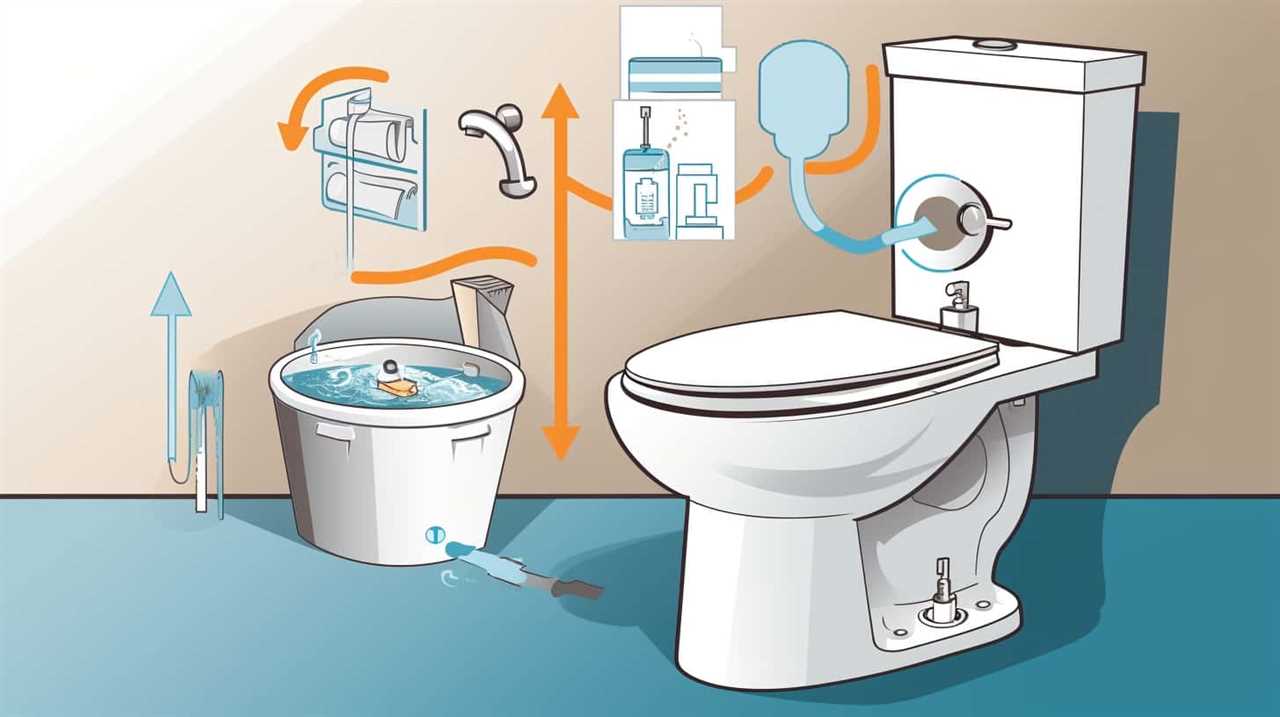
Key Takeaways
- Flushing a clogged toilet can lead to significant water damage and mold growth in the surrounding area.
- Sewage backflow from a clogged toilet can damage pipes, contaminate the water supply, and release foul odors.
- Excessive force when flushing a clogged toilet can cause cracks in the toilet bowl, leading to water leakage and potential flooding.
- Flushing a clogged toilet can result in the spread of bacteria and waterborne diseases, contaminating nearby surfaces.
Water Overflow and Potential Damage
When a clogged toilet is flushed, water can overflow and cause potential damage to the surrounding area. This water overflow can lead to significant water damage, which can be costly and time-consuming to repair.
The excess water can seep into the flooring, walls, and furniture, causing structural damage and weakening the integrity of the affected surfaces.
Additionally, if not addressed promptly, the stagnant water can create the ideal conditions for mold growth. Mold thrives in damp environments, and the moisture from the water overflow provides the perfect breeding ground.
Mold growth not only damages the affected areas but also poses health risks to occupants, such as respiratory problems and allergies.

Therefore, it’s crucial to address a clogged toilet promptly to prevent water damage and mitigate the risk of mold growth.
Backflow of Sewage and Unpleasant Odors
As we continue discussing the consequences of flushing a clogged toilet, it is important to address the issue of sewage backflow and the unpleasant odors that can result. When a toilet is clogged and flushed, the wastewater has nowhere to go and can flow back into the plumbing system, causing a sewage backup. This can lead to a range of problems, including damage to the pipes, contamination of the water supply, and the release of foul odors. To prevent sewage backup and unpleasant odors, proper septic tank maintenance is essential. Regularly inspecting and pumping the septic tank, avoiding flushing non-biodegradable items, and using enzyme additives can help maintain the system’s efficiency and prevent clogs. Additionally, installing backwater valves and sewer line check valves can provide added protection against sewage backflow.
| Sewage Backup Prevention | Septic Tank Maintenance |
|---|---|
| Regular inspections | Regular pumping |
| Avoid flushing non-biodegradable items | Use enzyme additives |
| Install backwater valves and sewer line check valves |
Risk of Toilet Bowl Cracks or Damage
Toilet bowl cracks or damage can occur when a clogged toilet is flushed with excessive force. It’s important to understand the potential risks associated with this action to prevent further complications.
Here are three reasons why toilet bowl cracks or damage may occur:
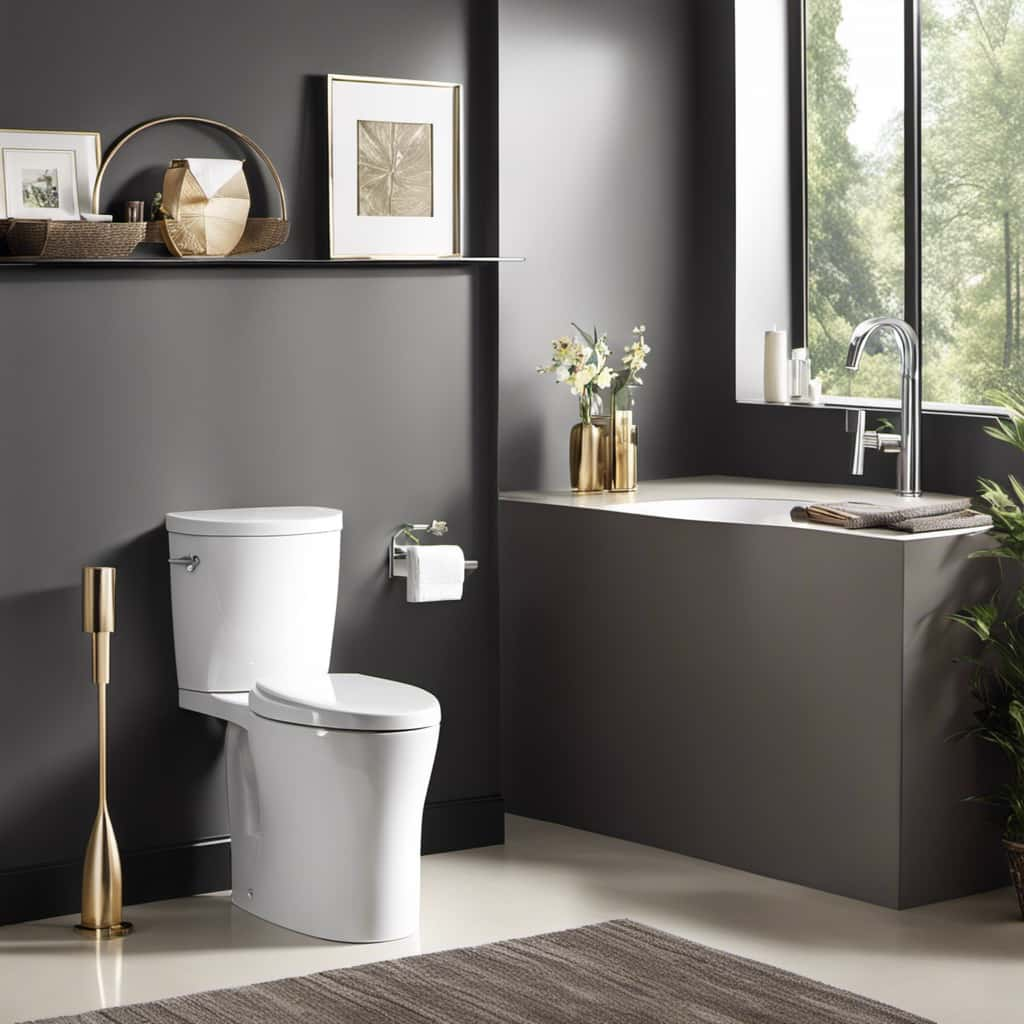
- Internal pressure: When a clogged toilet is forcefully flushed, the internal pressure within the toilet bowl increases significantly. This sudden surge of pressure can cause cracks to form in the porcelain or other materials of the bowl.
- Structural integrity: Over time, toilets may develop weak spots or wear and tear. Flushing a clogged toilet with excessive force can exacerbate these issues, leading to cracks or damage in the bowl.
- Water leakage: Cracks in the toilet bowl can result in water leakage, leading to potential flooding or water damage in your bathroom. This not only requires immediate repairs but may also necessitate toilet bowl replacement.
To avoid the risk of toilet bowl cracks or damage, it’s advisable to address clogs promptly and avoid applying excessive force when flushing. Regular maintenance and inspections can also help identify any potential weaknesses in the toilet bowl and prevent further issues.
Plumbing System Blockages and Expensive Repairs
Additionally, addressing plumbing system blockages promptly is crucial as it can help prevent expensive repairs in the long run.
When blockages occur in the plumbing system, they can lead to a range of costly consequences. For instance, clogs can cause pipes to burst or leak, resulting in water damage to your property. These repairs can be not only time-consuming but also expensive.
Additionally, blockages can cause sewage backups, which can lead to health hazards and the need for extensive cleaning and disinfection.
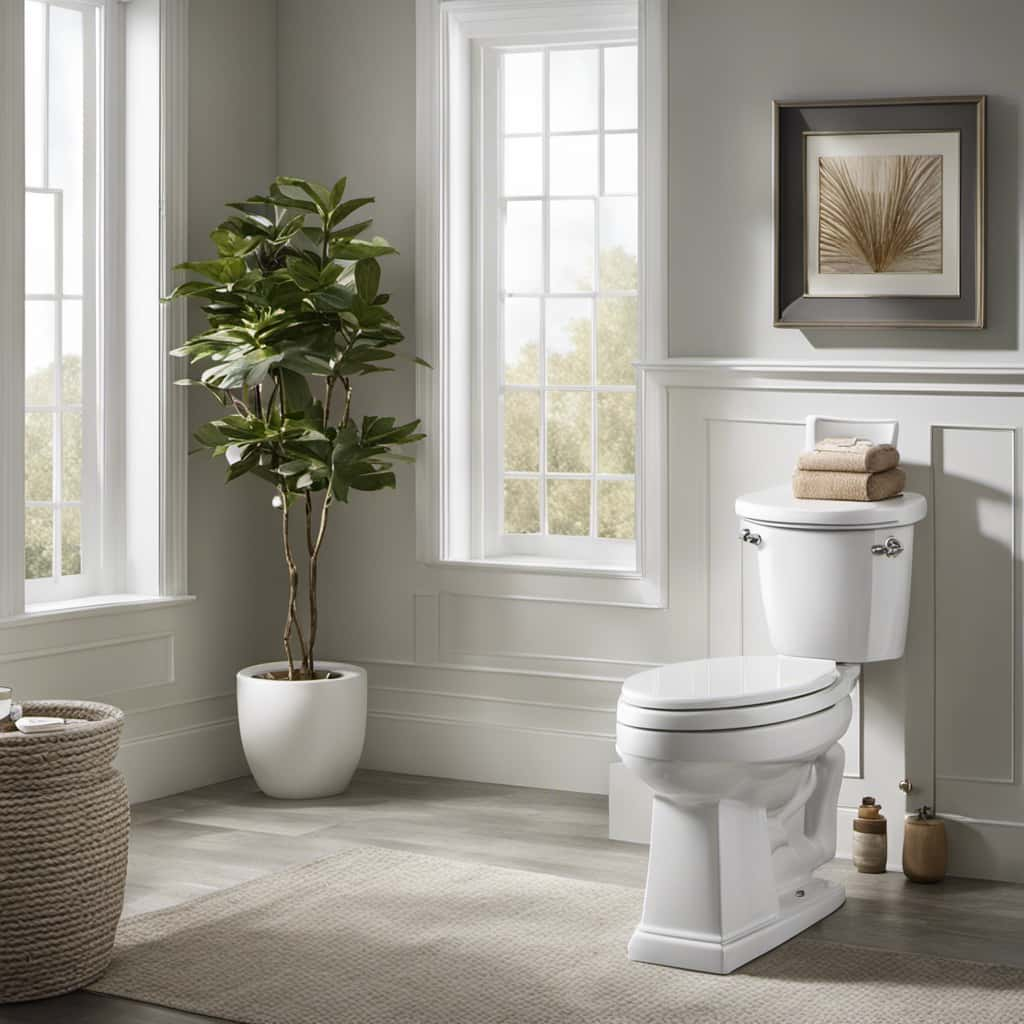
To prevent such costly consequences, it’s important to take preventive measures. Regularly inspecting and maintaining your plumbing system, avoiding flushing inappropriate materials down the toilet, and using drain screens can help prevent blockages.
Potential Health Hazards and Contamination
When blockages occur in our plumbing system, we need to be aware of the potential health hazards and contamination that can arise. Flushing a clogged toilet can lead to bacterial contamination and the spread of waterborne diseases. Here are three reasons why:
- Backflow:
When a toilet is clogged, there’s a risk of backflow, where wastewater flows back into the toilet bowl. This wastewater may contain harmful bacteria and pathogens that can cause illness if ingested or come into contact with open wounds. - Contaminated Surfaces:
Overflowing water from a clogged toilet can contaminate nearby surfaces, such as floors and walls. If not properly cleaned and disinfected, these surfaces can become breeding grounds for bacteria and contribute to the spread of waterborne diseases. - Airborne Contaminants:
Flushing a clogged toilet forcefully can create aerosols, tiny droplets that can contain bacteria and other pathogens. Inhaling these airborne contaminants can lead to respiratory infections and other health issues.
It is crucial to address plumbing blockages promptly to minimize the risk of health hazards and contamination.
Conclusion
In conclusion, flushing a clogged toilet can lead to a cascade of water overflow, backflow of sewage, and even the risk of cracks or damage to the toilet bowl.

It can also cause blockages in the plumbing system, resulting in expensive repairs.
Furthermore, there’s a potential for health hazards and contamination.
So, it’s best to avoid this situation like the plague and call a plumber to save yourself from a watery disaster.

